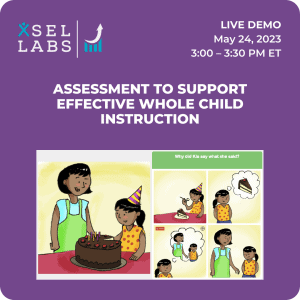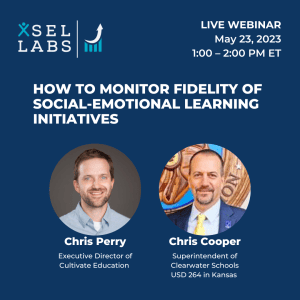In the last blog post, I suggested using a student SEL assessment that is designed to measure the skills your SEL program is designed to teach. I noted that xSEL Labs has crosswalked several widely used SEL programs with SELweb, and offered the following example:
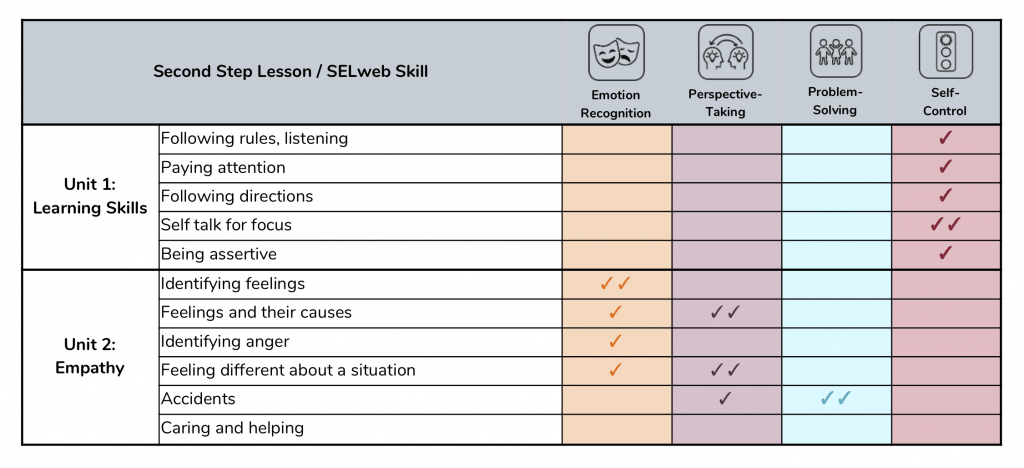
Download SEL Program Alignments to SELweb
Each row is a lesson. The color-coded columns reflect the skills SELweb is designed to measure. A single check mark means there is some overlap. Two check marks means there is a lot of overlap.
Start by Examining Formative SEL Assessment Data
Imagine that your school district had adopted the SEL program from Figure 1 and that your district used SELweb as its student SEL skill assessment. The question now is, how can the SEL assessment data help make the SEL program more effective?
Well, let’s imagine that you assessed your students in the fall. Your goal in doing so is to use the assessment data formatively, to identify student strengths and needs and use that information to guide instruction. Imagine further that this was the pattern of performance in Ms. Hynes’ class:
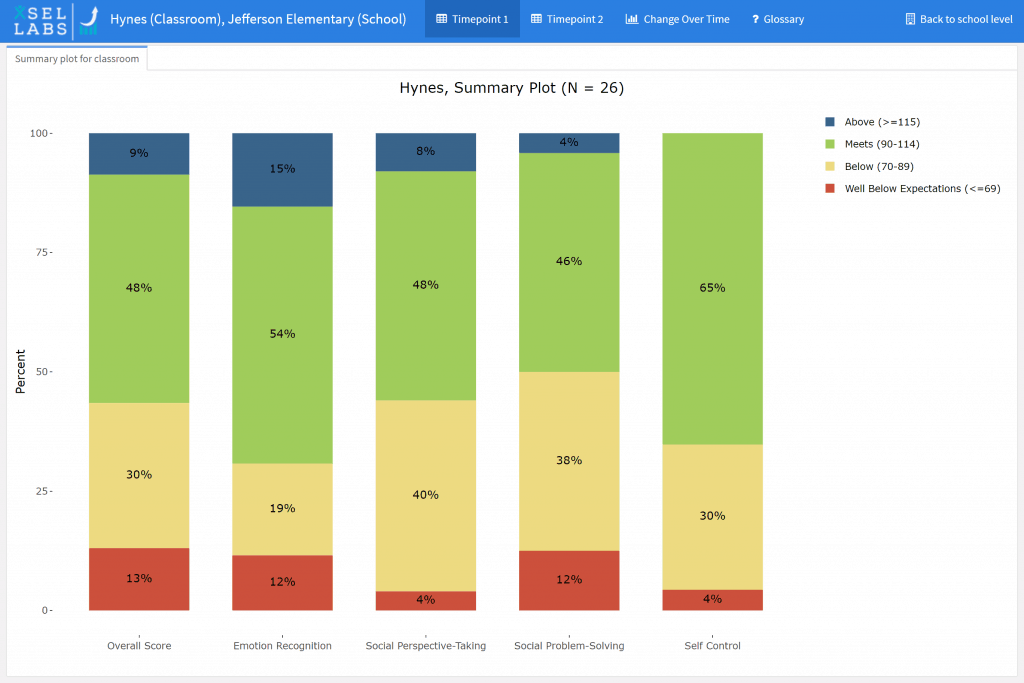
Each bar shows the percentage of students in her class who performed above, at, below, and well-below average across the skill areas assessed by SELweb. From left to right, the bars reflect: overall performance, emotion recognition, social perspective-taking, social problem-solving, and self-control. Take a moment to review the figure and identify areas of strength and areas of need in this class.
You might notice that 69% of students performed at or above average on emotion recognition—this is an area of relative strength. In contrast, fewer students performed at or above average in social problem-solving (50%) and social perspective-taking (56%). With the hypothesis that social problem-solving and social perspective-taking are areas of particular need, how might you use the scope and sequence from Figure 1 to decide how and what to teach?
Next Use the Crosswalk to Identify and Target SEL Program Adaptations
In reviewing the scope and sequence referenced above in Figure 1, you will note which lessons focus on social problem-solving and which focus on social perspective-taking. Because this group of students may need some extra help in these areas, you might decide to cover those lessons in greater depth, repeat the lessons multiple times, or refer to the concepts and strategies from those lessons as you teach other skills.
In this way you can use findings from student SEL assessment data to guide your use of the SEL program. You’re teaching the same scope and sequence. But just as you use good academic assessment data to decide what skills to emphasize in your academic instruction, now you’re using student SEL skill assessment to decide what SEL skills to emphasize in your SEL instruction.
Once you’ve used the fall formative assessment findings from Figure 2 to decide how to use your SEL resources, you can then execute the plan for the remainder of the fall and into the new year, as shown in Figure 3 below.
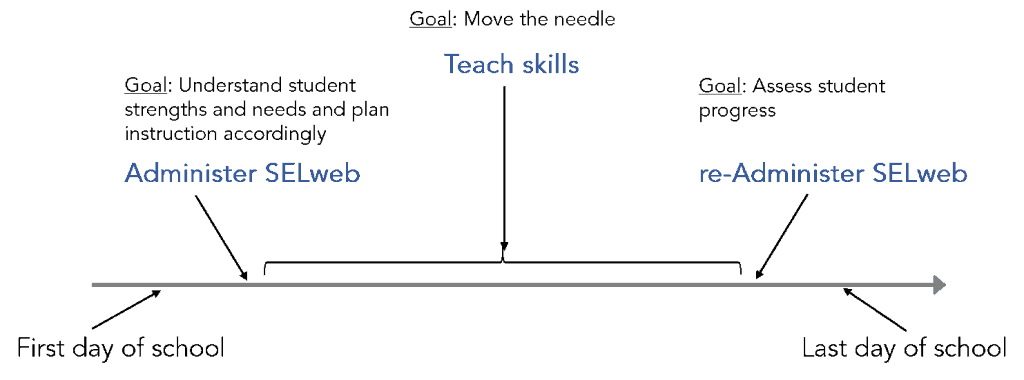
Finally Re-Administer SEL Assessment and Examine Changes Over Time
In the spring, you re-assess to see what kind of progress students made. The chart in Figure 4 below compares student performance in the fall to student performance in the spring.

Take a few moments to review the chart. What do you notice? What has changed? How much? What do you make of that?
A couple of noteworthy points—a greater percentage of students are at or above average in all of the skill areas assessed by SELweb, and this is particularly true with social problem-solving and social perspective-taking, two areas of need from the fall. In other words, students appear to have made meaningful progress in response to instruction.
Moving Towards Continuous Improvement Cycles
Imagine you repeated this cycle annually to focus instruction in the fall and to monitor progress in the spring. I believe this kind of continuous improvement cycle has great potential to improve student outcomes.
Is this something you would find useful? How might you use this kind of assessment data inform your work with students?

